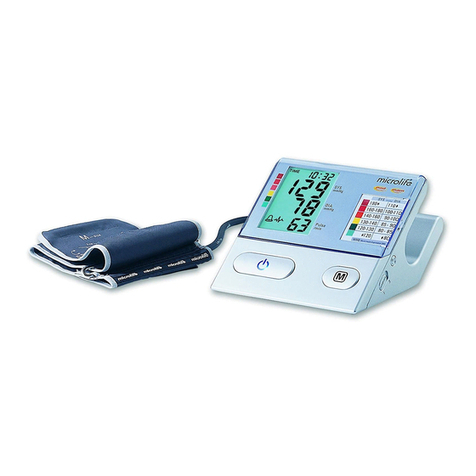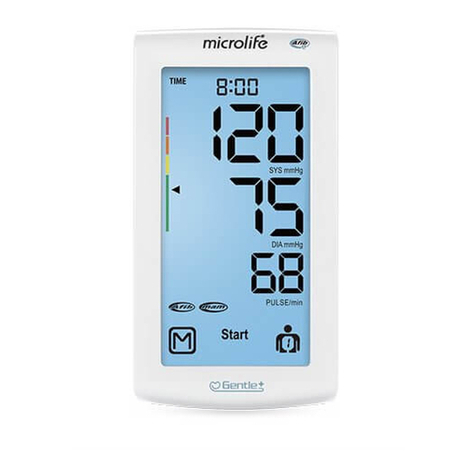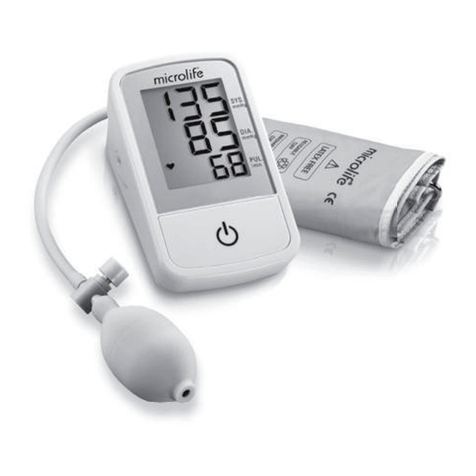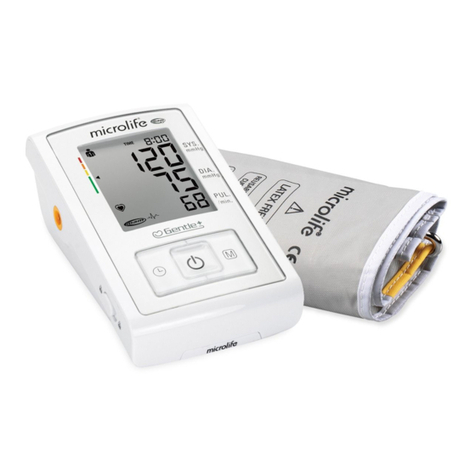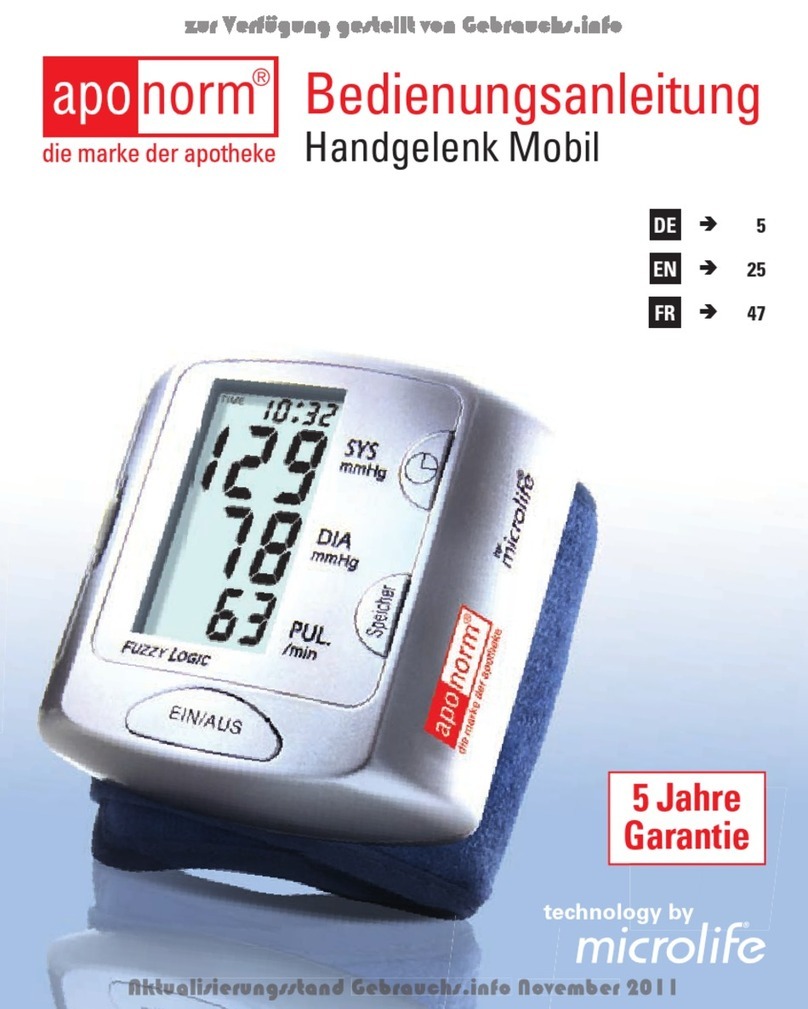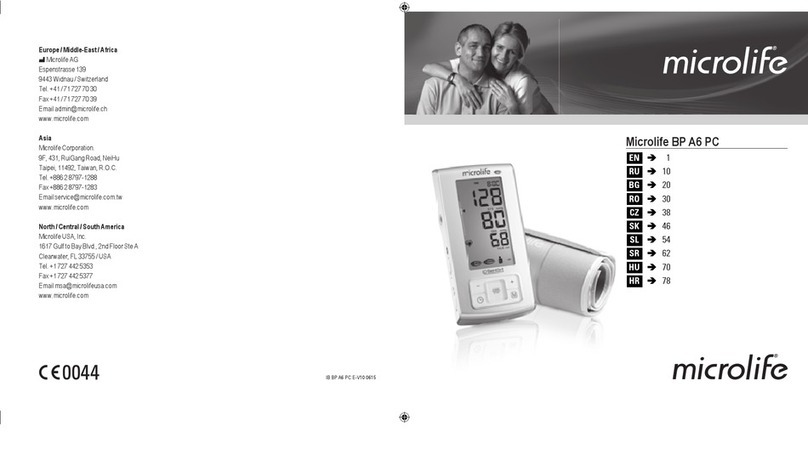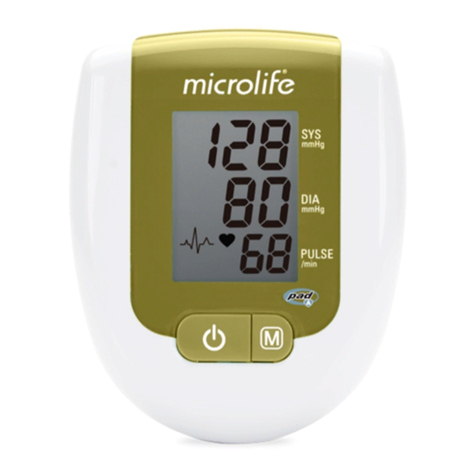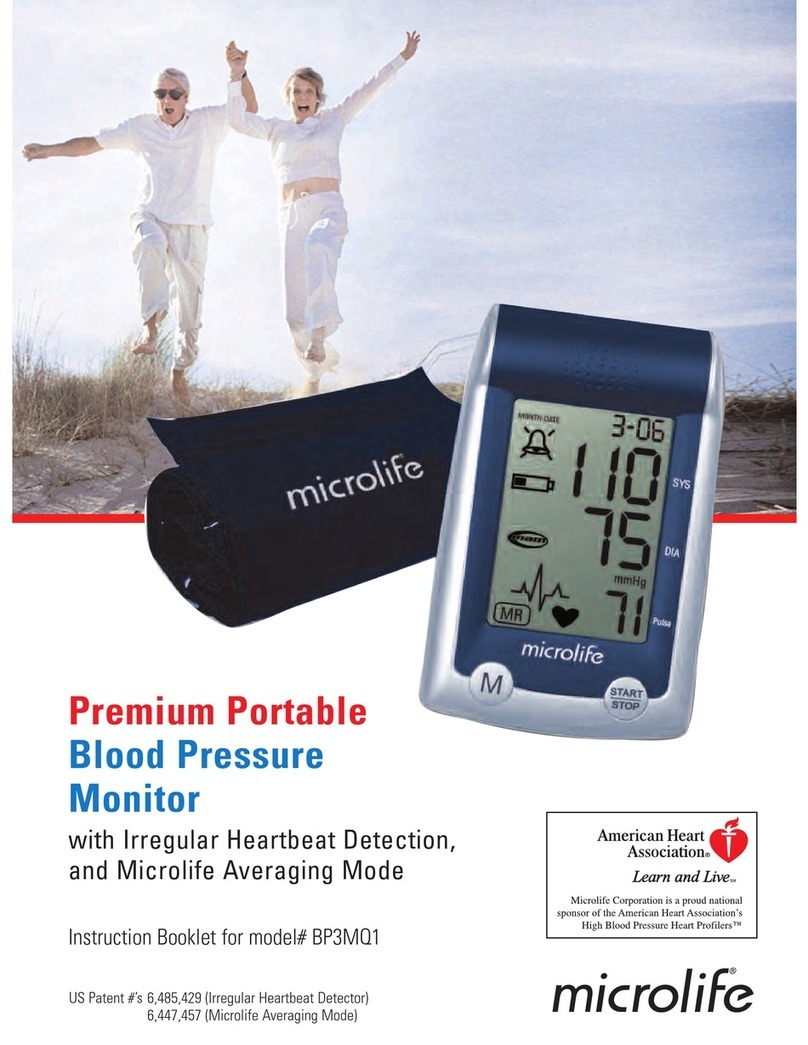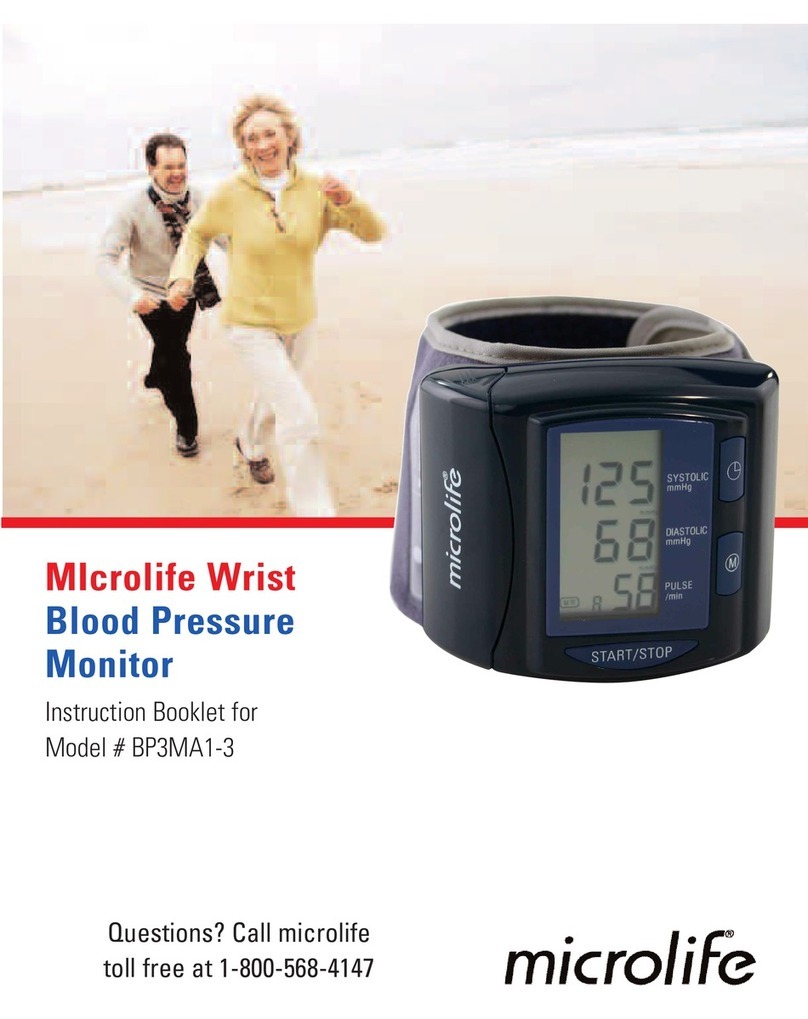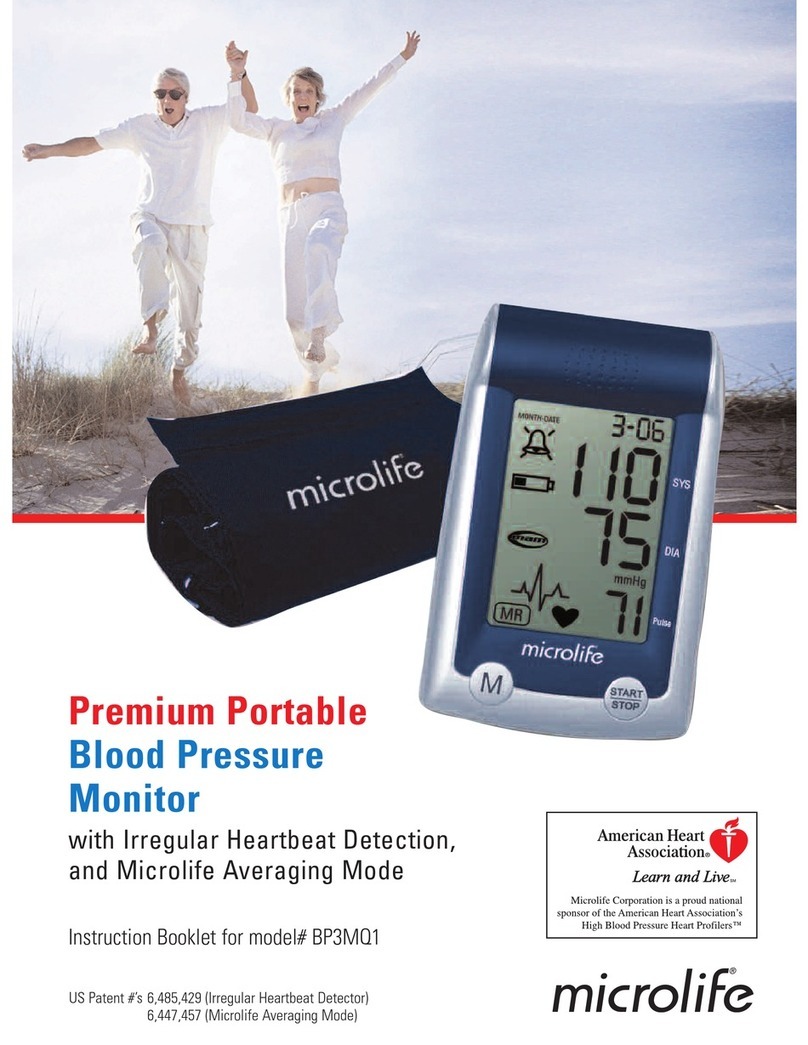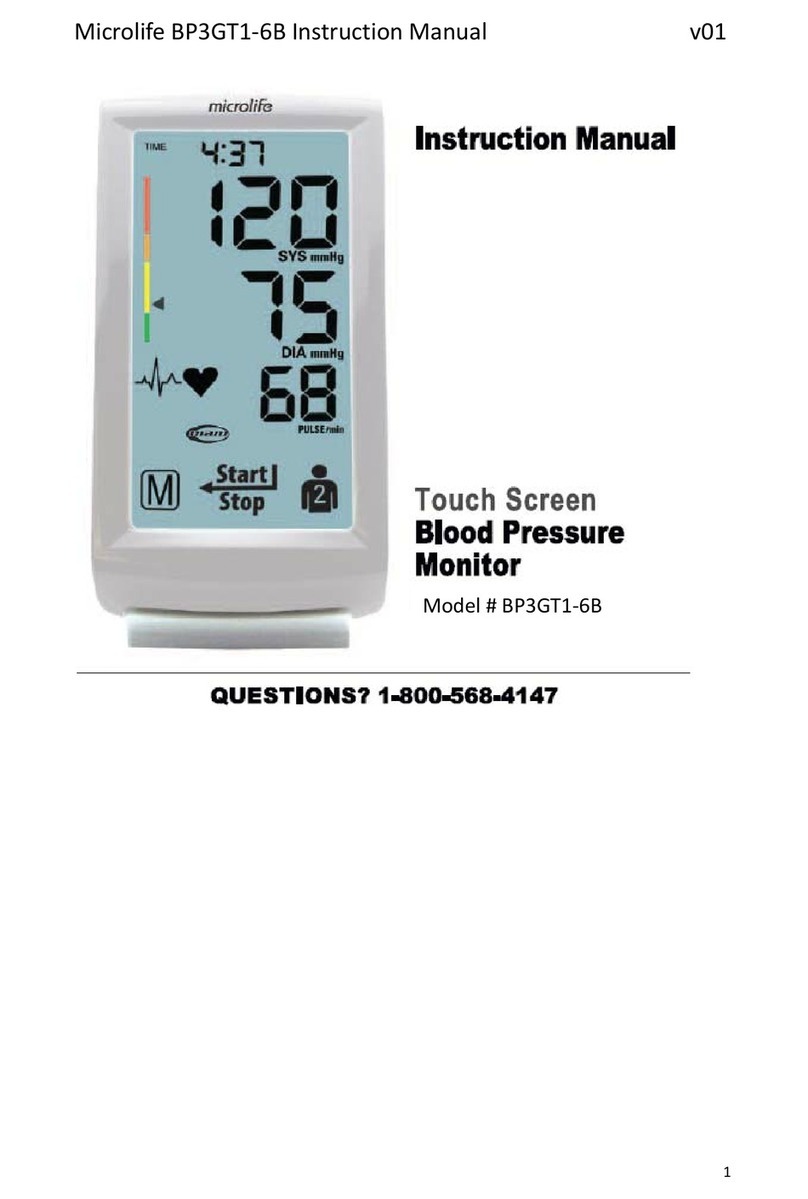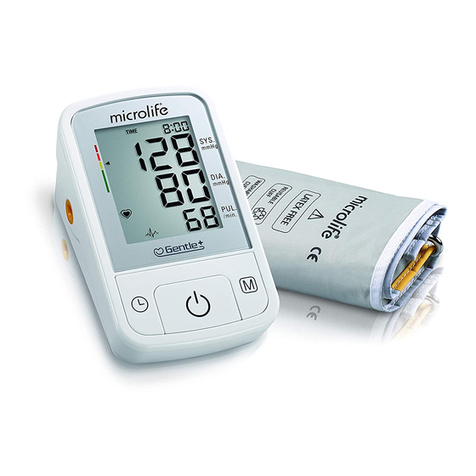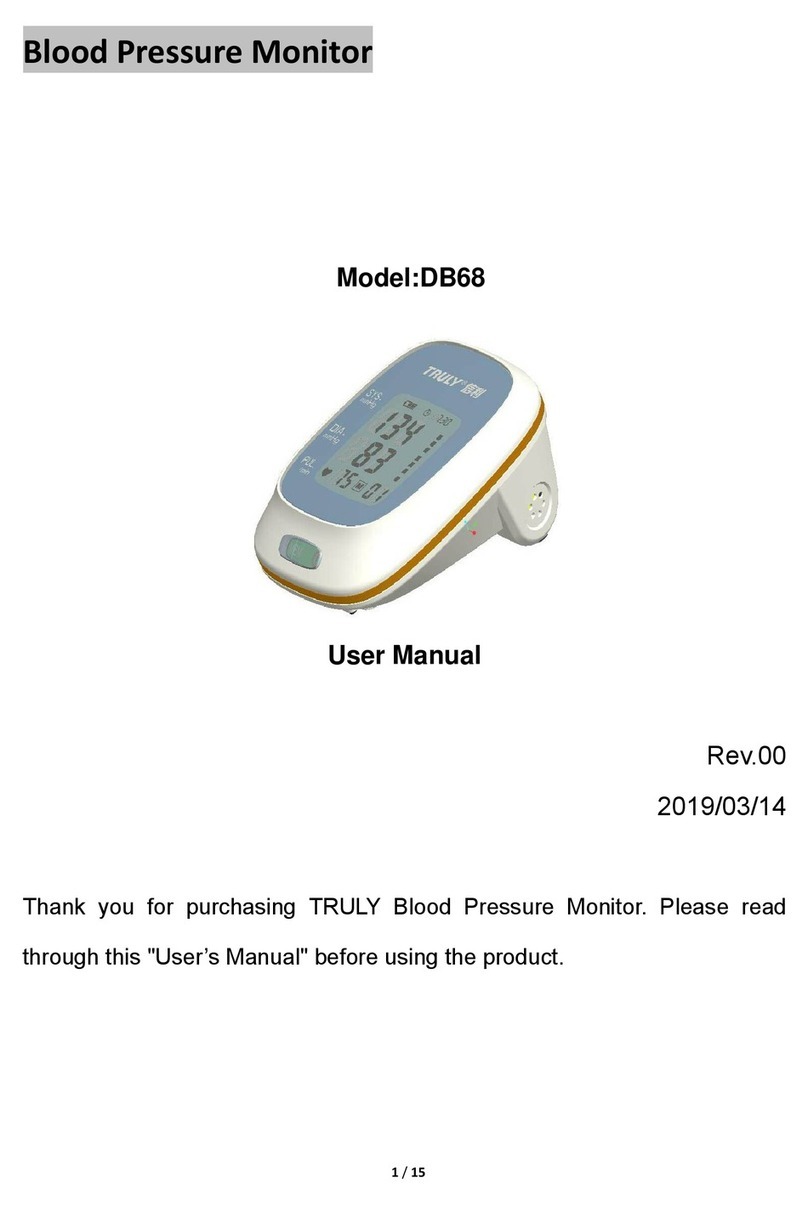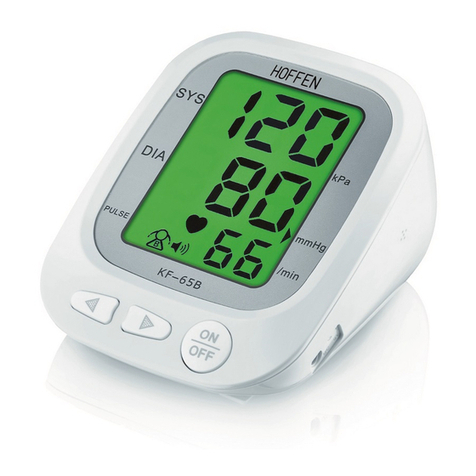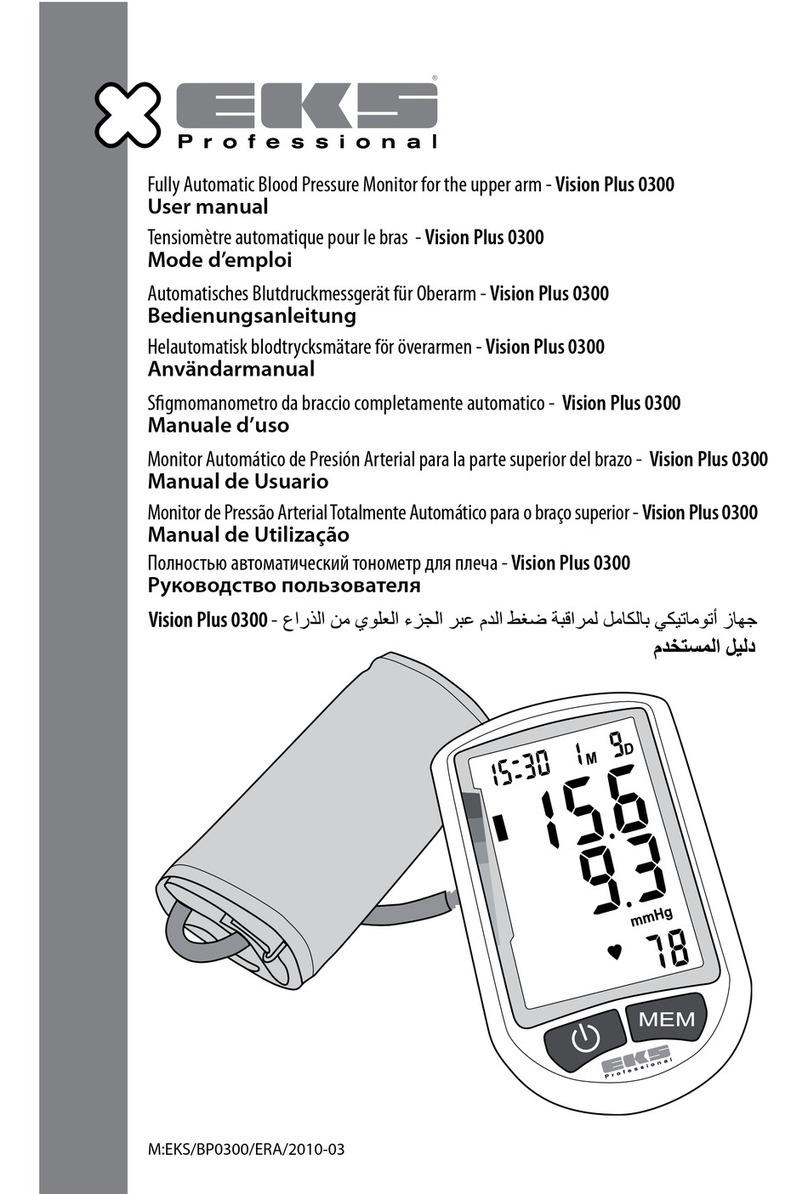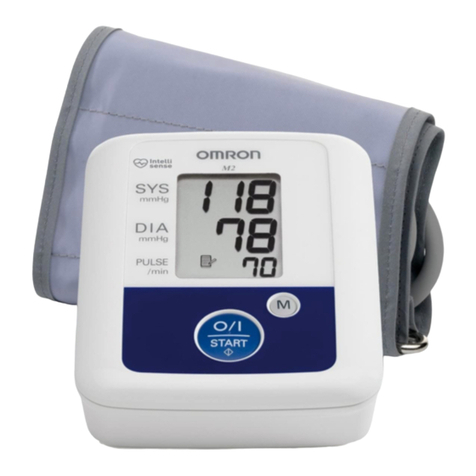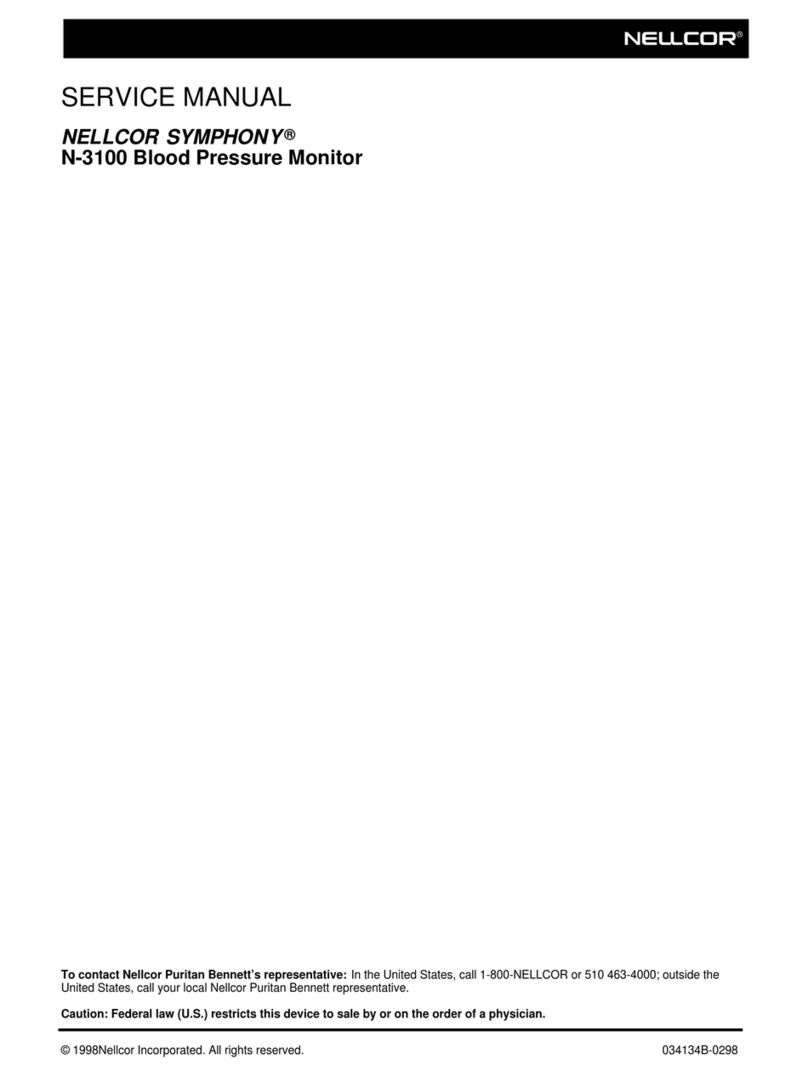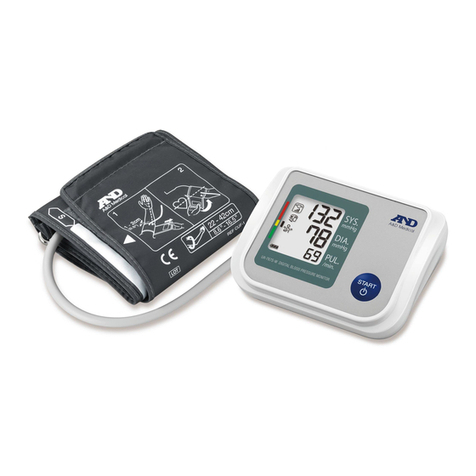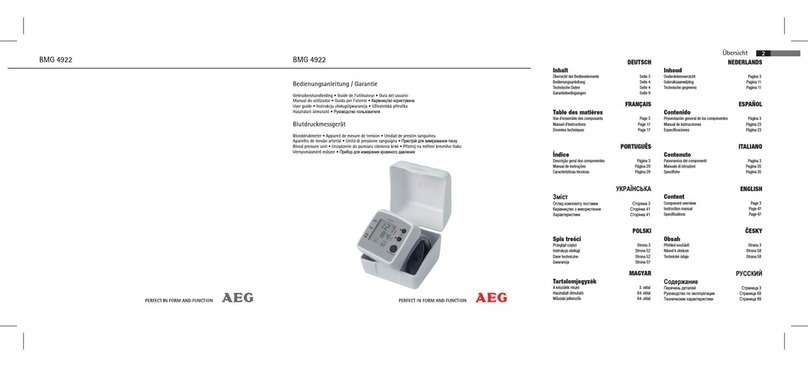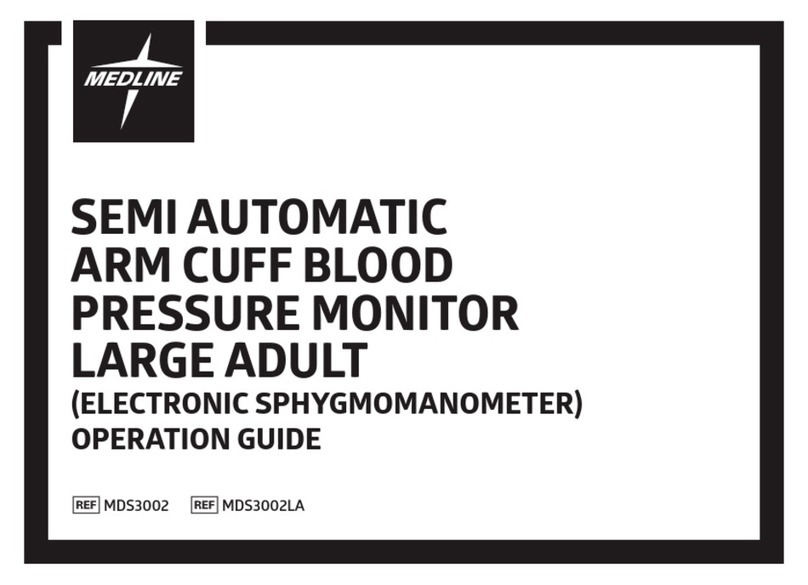
4
The artery mark on the cuff (ca. 3 cm long bar) must lie over
the artery which runs down the inner side of the arm.
Support your arm so it is relaxed.
Ensure that the cuff is at the same height as your heart.
6. Press the ON/OFF button 1to start the measurement.
7. The cuff will now pump up automatically. Relax, do not move
and do not tense your arm muscles until the measurement
result is displayed. Breathe normally and do not talk.
8. The measurement is performed during the inflation. The infla-
tion speed may vary, this is a normal occurence.
9. During the measurement, the pulse indicator BK flashes in the
display.
10.The result, comprising the systolic AP and the diastolic AQ
blood pressure and the pulse rate AR is displayed. Note also the
explanations on further display symbols in this booklet.
11.When the device has finished measuring, remove the cuff.
12.Switch off the device. (The monitor does switch off automati-
cally after approx. 1 min.).
How not to store a reading
As soon as the reading is displayed press and hold the ON/OFF
button 1until «M» BP is flashing. Confirm to delete the reading by
pressing the M-button AK.
4. Appearance of the Pulse Arrhythmia (PAD)
This symbol BN indicates that certain pulse irregularities were
detected during the measurement. In this case, the result may
deviate from your normal blood pressure – repeat the measure-
ment. In most cases, this is no cause for concern. However, if the
symbol appears on a regular basis (e.g. several times a week with
measurements taken daily) we advise you to tell your doctor.
Please show your doctor the following explanation:
5. Traffic Light Indicator in the Display
The bars on the left-hand edge of the display AS show you the
range within which the indicated blood pressure value lies.
Depending on the height of the bar, the readout value is either
within the optimum (green), elevated (yellow), too high (orange) or
dangerously high (red) range. The classification corresponds to
the 4 ranges in the table as defined by the international guidelines
(ESH, AHA, JSH), as described in «Section 1.».
6. PC-Link Functions
This device can be used in conjunction with a personal computer
(PC) running the Microlife Blood Pressure Analyser (BPA) software.
The memory data can be transferred to the PC by connecting the
monitor via a cable.
If no CD and cable is included download the BPA software from
www.microlife.com and use a USB cable with a Mini-B 5 pin
connector.
Installation and data transmission
1. Insert CD into the CD ROM drive of your PC. The installation
will start automatically. If not, please click on «SETUP.EXE».
2. Connect the monitor via the cable to the PC; there is no need to
switch the device on. 3 horizontal bars will appear on the
display and last for 3 seconds.
3. The bars will then flash to indicate that the connection between
PC and device is successful. As long as the cable is plugged in,
the bars will keep flashing and the buttons are disabled.
During the connection, the device is completely controlled
by the computer. Please refer to the «help» file for software
instructions.
7. Data Memory
This device automatically stores up to 99 measurement values for
each of the 2 users.
Viewing the stored values
Select either user 1 or 2 with the user switch AT.
Press the M-button AK briefly, when the device is switched off. The
display first shows «M» BP and «A», which stands for the average
of all stored values.
Pressing the M-button again displays the previous value. Pressing
the M-button repeatedly enables you to move from one stored
value to another.
Information for the doctor on frequent appearance of the
Arrhythmia indicator
This device is an oscillometric blood pressure monitor that also
analyses pulse irregularity during measurement.
The arrhythmia symbol is displayed after the measurement, if
pulse irregularities occur during measurement. If the symbol
appears more frequently (e.g. several times per week on
measurements performed daily) we recommend the patient to
seek medical advice.
This device does not replace a cardiac examination, but serves
to detect pulse irregularities at an early stage.
